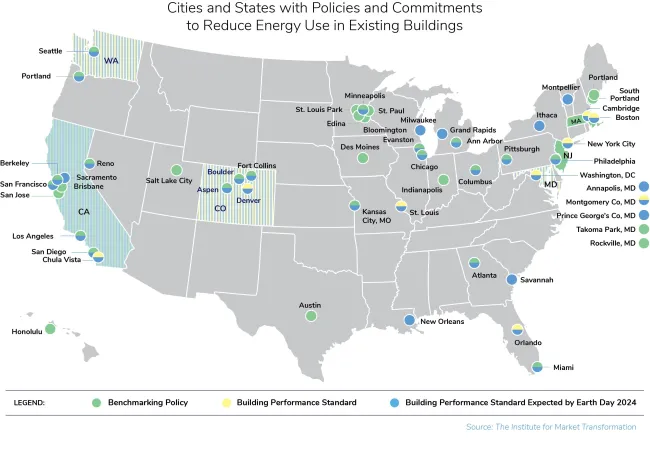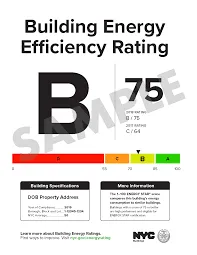Have Questions? We’re Here to Help!
Discover more about improving facility performance while reducing costs.

This blog is the first in a three-part series exploring how investing in sustainability now will help protect your business from mounting facility-centric risks: the swift rise of building performance regulations, increasing energy costs, and the high costs of a run-to-fail approach to operations.
By this time next year 20% of U.S. building stock will likely be subject to energy performance requirements. This fast-moving regulatory trend poses a near and present threat to businesses across the country—but also an opportunity to gain a competitive edge.
In many cities across the U.S., buildings account for up to 50%-75% of city-wide greenhouse gas emissions—and building owners are feeling the heat to bring their contributions down.
That pressure is about to get more intense as the nation works to slash emissions by 50%-52% from 2005 levels by 2030. Already a Federal Building Performance Standard (BPS) has been set to electrify 30% of federally-owned building square footage by 2030.
But federal leaders aren’t the only ones laying out performance regulations.
Cities and states across the U.S. are moving the needle toward decarbonization by requiring their own sets of emissions reduction standards.

Right now a group of over 40 (and counting) state and local governments have committed to rolling out energy/emissions performance improvement requirements for buildings and other commercial and multifamily facilities by 2024. That’s according to the National BPS Coalition, a program launched by President Biden and facilitated by the Institute for Market Transformation (IMT).
Each jurisdiction has unique policies, but they generally fall into the following categories:
Prescriptive requirements like an energy audit and tune-ups
Audit and tune-up policies take a deeper dive into facility energy performance and provide recommendations to encourage facility owners and operators to make reasonable upgrades when possible.
For example, Seattle’s Building Tune-up ordinance identifies low- or no-cost actions related to building operations and maintenance. Non-residential buildings of more than 50,000 square feet must comply with the requirement every five years—which means not only identifying tune-up opportunities but executing some or all of them as well.
Atlanta, Georgia requires energy audits every 10 years for commercial buildings 25,000 square feet or larger. And the city of Austin, Texas, requires energy audits and disclosures for all buildings within city limits.
Meanwhile in New York City buildings get letter grades based on their energy

efficiency performance, while in Chicago, performance is rated with one to four stars, with four being the highest performers.
These types of policies play a role in accelerating energy reductions and preparing building owners for deeper action that’s required to meet the necessary climate goals set.
By Earth Day 2024, we expect 20% of U.S. building stock to be subject to such standards mentioned above. While the commitments vary by jurisdiction, the trend is toward more, not less regulation in our most populated cities.
This means building owners and portfolio managers need to get a head start on managing regulatory risk, which can include:
Fortunately mitigating these risks also means uncovering new opportunities.
By embracing building performance benchmarking and standards, you can optimize energy use and spend, support ESG strategy, and improve brand reputation.
Like most proactive sustainability measures, embracing building performance strategy can align with and accelerate your business goals—from lowering operating costs to increasing property value.
Over the next 12 months, building owners have a vital window to reduce risk, and embrace opportunity.
By deliberately taking the above-mentioned risks into account during your investment decision making investing strategically in current development, renovation, and system replacements you can significantly reduce financial risk while ensuring long-term facility value.
The best place to start is with a portfolio-wide analysis of the energy and asset condition performance of your buildings. With current energy performance insights as a baseline, you can use operating measures such as controls tune-ups to address low-hanging fruit for quick wins across your portfolio. From there look to capital measures such as major systems upgrades and renewable energy to hit the long-term goals cities are setting for building decarbonization.
The regulatory tide is turning as more cities and states work to address climate change—a trend that will only accelerate in the coming years.
Learn how a Mantis Innovation expert can help your facilities get ahead of the regulatory risk curve.
And stay tuned for the next topics in the risk series: energy cost risks (2) and operational risks (3).
Discover more about improving facility performance while reducing costs.